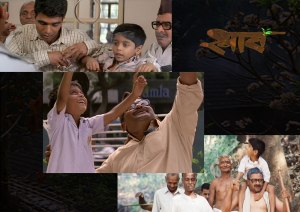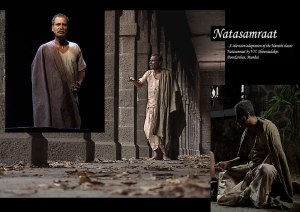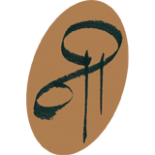Dirty business!
You must be guessing thousand topics after reading this title. Something dangerous, something spicy, something absolutely taboo and on those lines.
Also its been a few weeks since I have written on this blog. I had been busy with many things. I had designed and produced this Marathi feature film ‘Nadi Vahate’. It was selected in Pune International Film Festival’s Marathi competition section. Our director won the special jury award in this festival for the same. I will be talking about design part of this film at a later stage. And many other things were happening at the same time so I just had to take a brief break from blog writing. so you must be thinking that I have lost track!
I hate (or love) to break it to you that this post is not about any of those things. I am not moving away from art, craft n design. And no… I am not going to talk about recycling, re-purposing, reusing stuff that you generally throw in trash.
In the interesting and funny world of costumes, dirtying the costume is equally important as keeping the garments clean. This is exactly what I will be talking about in today’s post.
When we design costumes, it is not about a garment and it’s workmanship. It is or it should be primarily, secondarily and ultimately about the character. If the character needs couture then it is something that looks like couture. If character needs cheap roadside clothes, then that is what they should be.
Characters are like real people so they need to look real. Real people do not wear new clothes every day. Real people are not perfectly coordinated in their garments, accessories at every minute of the day. Real people’s clothes may have some stains on it. Real people may wear 5 year old garments. Real people’s clothes do have wear n tear (or at least hints of..) as per their everyday work practices. In short real people will not look like people on the fashion hoardings.
To make the clothes look like real people’s clothes, we play a lot with the brand new garments. All those techniques are called distressing techniques. These techniques involve all different kinds of paints, dyes, solvents, chemicals, teas, boot polishes, mud and all different kinds of processes like dying, beating the fabric, using stones, using hard wire brushes, fraying fabrics etc.
You need to know how each of these things work on fabrics. Also you need to know how clothes get dirty, at what places, what kind of dirt and what kind of ageing should happen in certain character’s clothes.
The most common technique for making the clothes look used is to soak the garment in hot tea. The strength of the tea and the soaking duration will decide the final outcome. Do you need to soak the whole garment or just need stains at places? Do you need to make the garment less white for camera or you need to make it look overly used? These are some of the many questions that one needs to address before boiling the tea.
You need to know the character’s lifestyle, how he/she uses the garments. What kind of movements are done wearing a specific garment. Where exactly the dirtying, staining, tearing of or weakening of fabric starts and how? All these factors are taken into consideration while deciding the distressing of the character’s clothes.
In warm climates, sweating is a big factor when we are talking about wear n tear of a piece of clothing. Sweating, exposure to dust and friction during movements over a period of time make parts of clothing a bit waxy and muddied. To achieve this effect only tea concoction or dye are not enough. Combination of boot polish and dirt work the best for this kind of spaces.

Marathi feature film Shwaas
In case of Shwaas, the characters from rural area were specifically from Konkan. Konkan has distinct red soil. You can see a hint of red on people’s clothes as well. May be it is because the water with which the clothes are washed plus the red dust. So along with tea, I boiled red dust as well.

Television adaptation of Natasamrat
Sometimes the distressing is needed to reflect the character’s inner emotions and disturbed mind. Then distressing based on realistic reasoning w.r.t. the character’s lifestyle is not needed. Costume designer needs to decide the level of distressing and final outcome of the garment. In the photos of Natasamrat above, the distressing done is twofold. His dhoti (lower garment) and bandi (upper garment) are distressed considering the character’s routine, age and phase of life. But the shawl like long garments are distressed so as to reflect the character’s emotions and distress.
Dhoti and bandi are soaked in tea and then touched with boot polish at places. You can see two different phases of the character here in the photos. Dirtying is done accordingly. The shawls are dyed to a colour appropriate for the scene. Then the fabric is cut at places. The cuts were beaten by stones and brushed vigourously with hard wire brush. And then it is touched with boot polish stains.
Photos from my new film Nadi Vahate
Nadi Vahate is set in Konkan region of Maharashtra. Most of the characters have agriculture based life style. So obviously all their garments are soaked in a concoction of tea and red soil. Boot polish treatment was done at places.
The difficult part of distressing was (or always is) maintaining continuity of distressing after washing of garments. Clothes need to be washed regularly in this climate, otherwise it becomes really unhyginic for the actors. To overcome this issue all you can do is use dyes that stay and retouch the boot polish parts after washing. I did this a lot for Nadi Vahate’s lead characters’ clothes.
For mob’s clothes and other generic clothes like towels, I had a basic tea/ red soil/ dye treatment done. And details were added to the garments as needed at the time of shoot. People wiping their muddied hands with garments, someone spraying mud spray on clothes was a normal site at the shoot.
My costume team and I working on the sets of Nadi Vahate
This dirtying business may be less spicy and dangerous but it sure is fun. Also good for venting out. It is similar to painting but only with different and unusual mediums. I can go on n on with different techniques, experiences, stories from this dirty business but time does not permit it.
So adios for now!
– Nee










Quite interesting……..👌👌
LikeLiked by 1 person
Thanks Anju!
LikeLike
Interesting article.
LikeLike
Thank you Shrilekha!
LikeLike
What a great description of what we do, Nee. I love that you chose to write about this. ❤️
LikeLiked by 1 person
Thanks a lot dear!
Isn’t this one of the most important things we do in costumes? 🙂
LikeLike
Very well written!
LikeLiked by 1 person